Pune Urban Forest - Koregaon Mul, Pune
Pune Urban Forest Project Pune, a rapidly growing metropolis, faces challenges like rising air pollution, urban heat island effect, and the need for e Read more
Plantation Site Gallery
Project Update 1
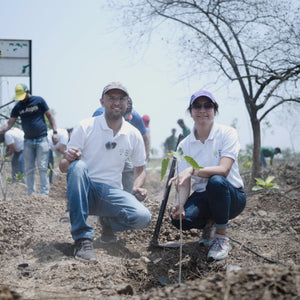
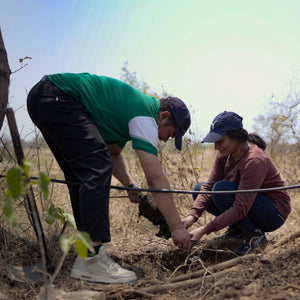
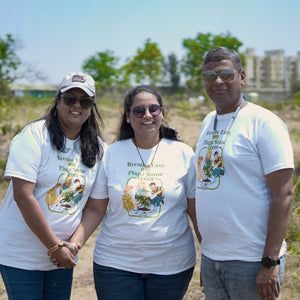

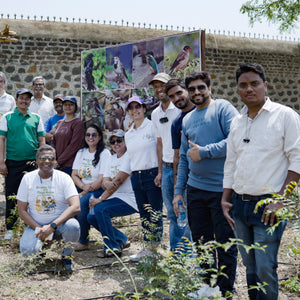

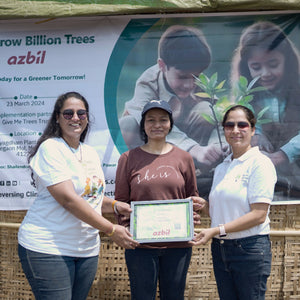
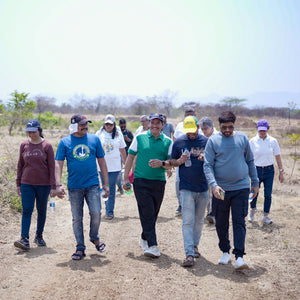



Digital Forest
Forest with 1,185 Trees planted
Want to plant your tree now?
Plant a Tree @ 299Pune Urban Forest - Koregaon Mul, Pune
Pune Urban Forest Project
Pune, a rapidly growing metropolis, faces challenges like rising air pollution, urban heat island effect, and the need for environmental sustainability. This urban forest project directly addresses these concerns by:
Combating Air Pollution
Pune experiences significant air quality issues. Planting native trees will help combat air pollution by filtering pollutants and improving air quality for city residents.
Mitigating Urban Heat
With increasing urbanization, Pune experiences rising temperatures. The urban forest will provide shade and promote evapotranspiration, leading to a cooler and more comfortable urban environment.
Enhancing Biodiversity
The loss of green spaces in Pune threatens local biodiversity. This project will create a haven for native flora and fauna, enriching the local ecosystem and promoting biodiversity conservation.
By strategically planting native trees and fostering a thriving urban forest, this project offers a tangible solution to environmental challenges faced by Pune, contributing to a healthier and more sustainable future for the city.
Project Details
- Address: Prayagdham Plantation Site, Koregaon Mul, Maharashtra 412202
- Implementation Partner: Give Me Trees Trust
- No of Trees Planned: 25,000
- Area: 40 Acres
Project Highlights
Native Tree Species
We prioritize planting trees indigenous to the Pune region, ensuring their suitability for the local climate and promoting a thriving ecosystem.
Community Engagement
We believe in involving the community in this project. Opportunities for volunteering, educational workshops, and citizen science initiatives will be available.
Long-Term Sustainability
We are committed to the long-term health and maintenance of the urban forest, ensuring its benefits are sustained for generations to come.
Get Involved
Support the Project
Contribute to the growth of this vital urban green space by planting trees in it.
Volunteer
Join our tree planting events, educational workshops, and community outreach initiatives.
Spread Awareness
Share information about the project and encourage others to participate in creating a greener Pune.
Trees Species
- Banyan (Ficus benghalensis): With its expansive canopy and aerial roots, the banyan tree provides shade and sanctuary, fostering biodiversity in Pune's parks and streets.
- Neem (Azadirachta indica): Revered for its medicinal properties, the neem tree's resilient nature and pest-repelling qualities make it a valuable addition to Pune's green spaces, contributing to a healthier environment.
- Peepal (Ficus religiosa): Symbolizing spiritual significance, the peepal tree's heart-shaped leaves and graceful branches create tranquil havens amidst Pune's bustling streets.
- Indian Rosewood (Dalbergia sissoo): Prized for its sturdy timber and elegant foliage, the Indian rosewood tree stabilizes soil near water bodies and adds aesthetic value to Pune's landscapes.
- Indian Laburnum (Cassia fistula): Adorned with clusters of golden-yellow flowers, the Indian laburnum tree brightens Pune's streetscapes and attracts pollinators, enhancing urban biodiversity.
- Jamun (Syzygium cumini): Bearing succulent purple fruits, the jamun tree provides nutritious snacks for Pune's residents and supports local wildlife, fostering a deeper connection to nature.
- Rain Tree (Samanea saman): Known for its expansive canopy and nitrogen-fixing capabilities, the rain tree enriches Pune's soil and provides habitat for urban wildlife.
- Indian Almond (Terminalia catappa): With its glossy leaves and decorative fruits, the Indian almond tree enhances Pune's parks and gardens while offering shade and beauty to residents.
- Indian Cork Tree (Millingtonia hortensis): Fragrant and ornamental, the Indian cork tree adds elegance to Pune's landscapes and provides habitat for birds and insects, contributing to urban biodiversity.
- Flame-of-the-Forest (Butea monosperma): With its fiery orange blooms, the flame-of-the-forest tree adds color and vitality to Pune's streetscapes, heralding the arrival of spring.
Follow Our Journey
Stay updated on the project's progress through this digital page. We will share updates and stories about the evolving urban forest.Together, we can build a thriving urban forest that benefits the environment, enhances the well-being of Pune residents, and creates a lasting legacy for generations to come.
Trees for Corporates
Trending
Most Popular
Urban Forests
Urban forests refer to the collection of trees and shrubs located in and around cities and towns, which provide critical environmental, social, and economic benefits. They help reduce air pollution, mitigate the urban heat island effect, enhance biodiversity, and improve the quality of life for city residents by providing recreational spaces and aesthetic value.
Tree Plantation
Tree plantation involves planting trees in a systematic and planned manner to restore, reforest, or create new forested areas. This practice plays a crucial role in combating deforestation, enhancing carbon sequestration, improving air quality, and providing habitat for wildlife. Tree plantations are essential for sustainable development and climate change mitigation.
Environmental Sustainability
Environmental sustainability refers to the responsible management of resources to ensure that natural ecosystems can endure and continue to provide essential services to human beings and other living organisms. It involves practices that reduce waste, promote renewable energy, conserve biodiversity, and minimize the impact of human activities on the environment.
Biodiversity Conservation
Biodiversity conservation is the practice of protecting and preserving the variety of life forms on Earth, including plants, animals, and microorganisms. This is crucial for maintaining ecosystem health, resilience, and functionality. Biodiversity conservation efforts include habitat restoration, protection of endangered species, and the establishment of protected areas.
Carbon Sequestration
Carbon sequestration is the process of capturing and storing atmospheric carbon dioxide to mitigate or defer global warming. Forests and tree plantations play a significant role in this process by absorbing CO2 through photosynthesis and storing it in biomass and soil. Enhancing carbon sequestration through reforestation and afforestation is a key strategy in climate change mitigation.
Green Spaces
Green spaces are areas of vegetation in urban settings, including parks, gardens, and nature reserves. These spaces provide numerous benefits, such as reducing air pollution, improving mental health, enhancing community well-being, and supporting biodiversity. The creation and maintenance of green spaces are essential for sustainable urban development.
Urban Heat Island Effect
The urban heat island effect is the phenomenon where urban areas experience higher temperatures than their rural surroundings due to human activities and the modification of land surfaces. Planting trees and creating green spaces can help mitigate this effect by providing shade, reducing surface temperatures, and enhancing evapotranspiration.
Community Engagement in Tree Planting
Community engagement in tree planting involves actively involving local residents, organizations, and stakeholders in tree planting and urban greening projects. This fosters a sense of ownership, increases awareness about environmental issues, and encourages collective action towards sustainability and environmental stewardship.
Native Tree Species
Native tree species are those that occur naturally in a specific region or ecosystem without human intervention. Planting native tree species is crucial for maintaining local biodiversity, supporting wildlife habitats, and ensuring the long-term success of reforestation and afforestation projects. Native trees are adapted to the local climate and soil conditions, making them more resilient and beneficial to the environment.
Ecosystem Services
Ecosystem services are the benefits that humans derive from natural ecosystems, including provisioning, regulating, cultural, and supporting services. Forests and urban green spaces provide numerous ecosystem services, such as air and water purification, climate regulation, recreational opportunities, and habitat for biodiversity. Protecting and enhancing these services is essential for human well-being and environmental health.
FAQ
What is the purpose of the Pune Urban Forest project?
This project aims to plant native trees in Pune to tackle environmental challenges. These trees will act as natural filters, improving air quality by absorbing pollutants. They will also provide shade and promote cooling through evapotranspiration, mitigating the urban heat island effect. Additionally, the project contributes to fighting climate change by sequestering carbon dioxide. By creating a habitat for native flora and fauna, the urban forest will enhance the city's biodiversity.
What types of trees will be planted?
The project prioritizes planting native tree species that are well-adapted to the Pune climate and ecosystem. This ensures their survival and promotes a thriving local habitat.
Where is the urban forest located?
The specific location(s) of the urban forest will be clearly mentioned on the project website or social media pages. You can also find maps showcasing the planting areas.
How can I get involved in the project?
There are several ways to contribute: donate to the cause, volunteer for tree planting events or workshops, or simply spread awareness about the project and encourage others to participate.
How can I stay updated on the project's progress?
Follow the project's digital page (website and social media) for regular updates, news, and stories about the evolving urban forest.
What are the long-term plans for the urban forest?
The project is committed to the long-term health and maintenance of the forest, ensuring its benefits are sustained for generations to come.
How will the project address the challenges of air pollution in Pune?
Planting native trees will act as natural air filters, absorbing pollutants like particulate matter and releasing clean oxygen, leading to improved air quality for city residents.
How will the urban forest help mitigate the urban heat island effect?
Trees provide shade and promote evapotranspiration, a process that cools the surrounding air. This helps to reduce surface temperatures and create a more comfortable urban environment.
What are the benefits of the project for biodiversity?
The urban forest will create a haven for native plants and animals, providing them with food, shelter, and breeding grounds. This will enrich the local ecosystem and promote biodiversity conservation.
How can businesses and organizations contribute to the project?
Businesses and organizations can partner with the project in various ways, such as sponsoring tree planting initiatives, providing volunteers, or offering financial support.
- Choosing a selection results in a full page refresh.
- Opens in a new window.












